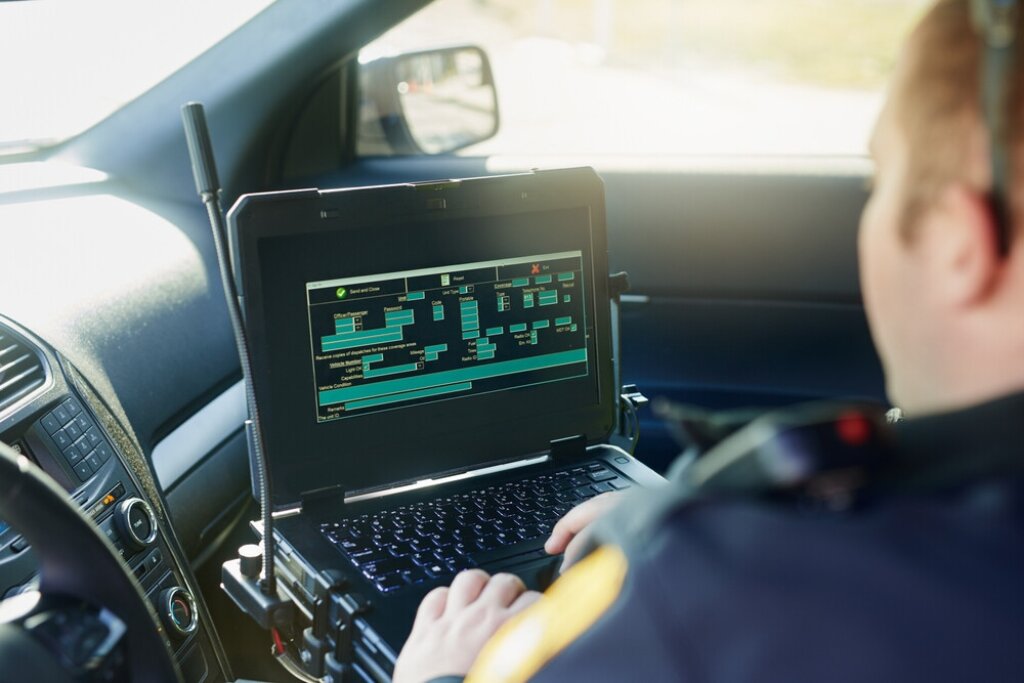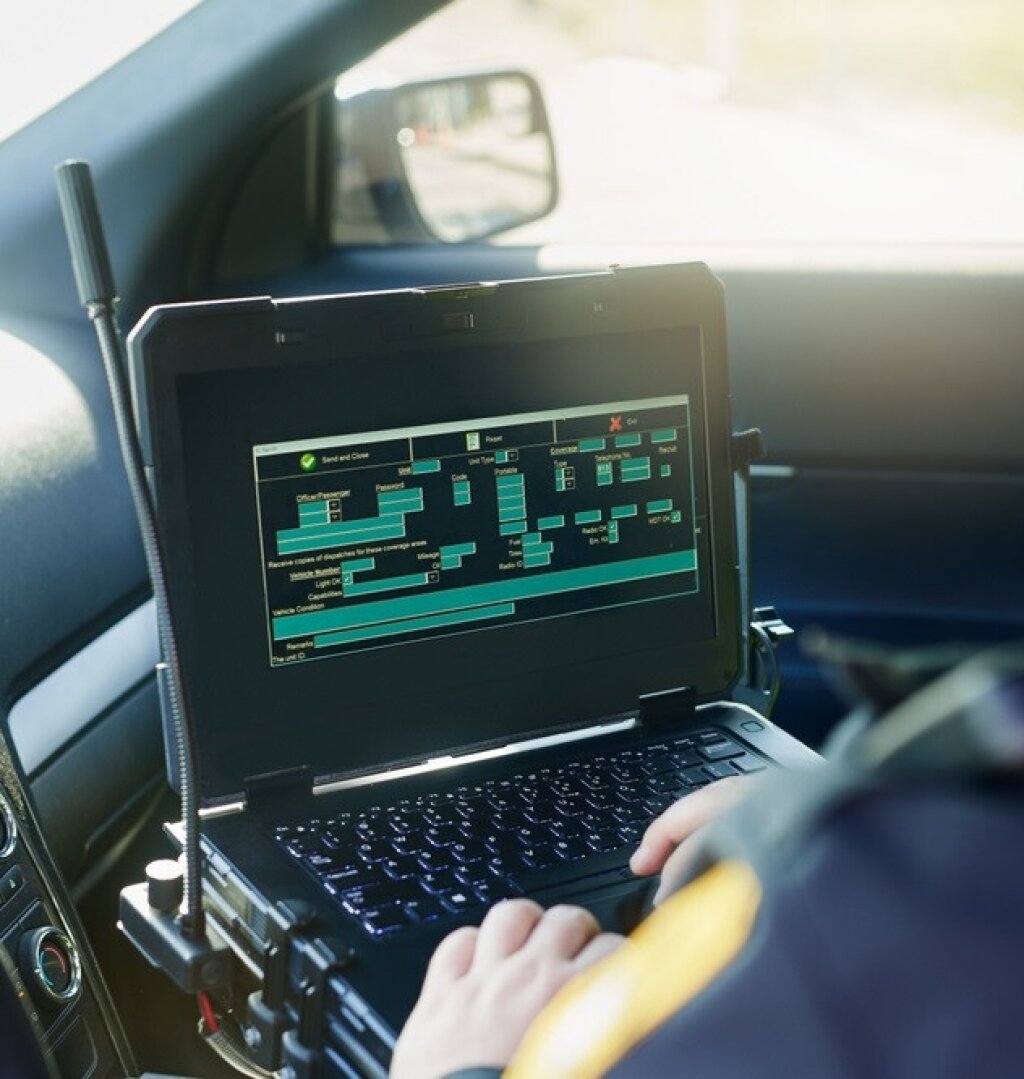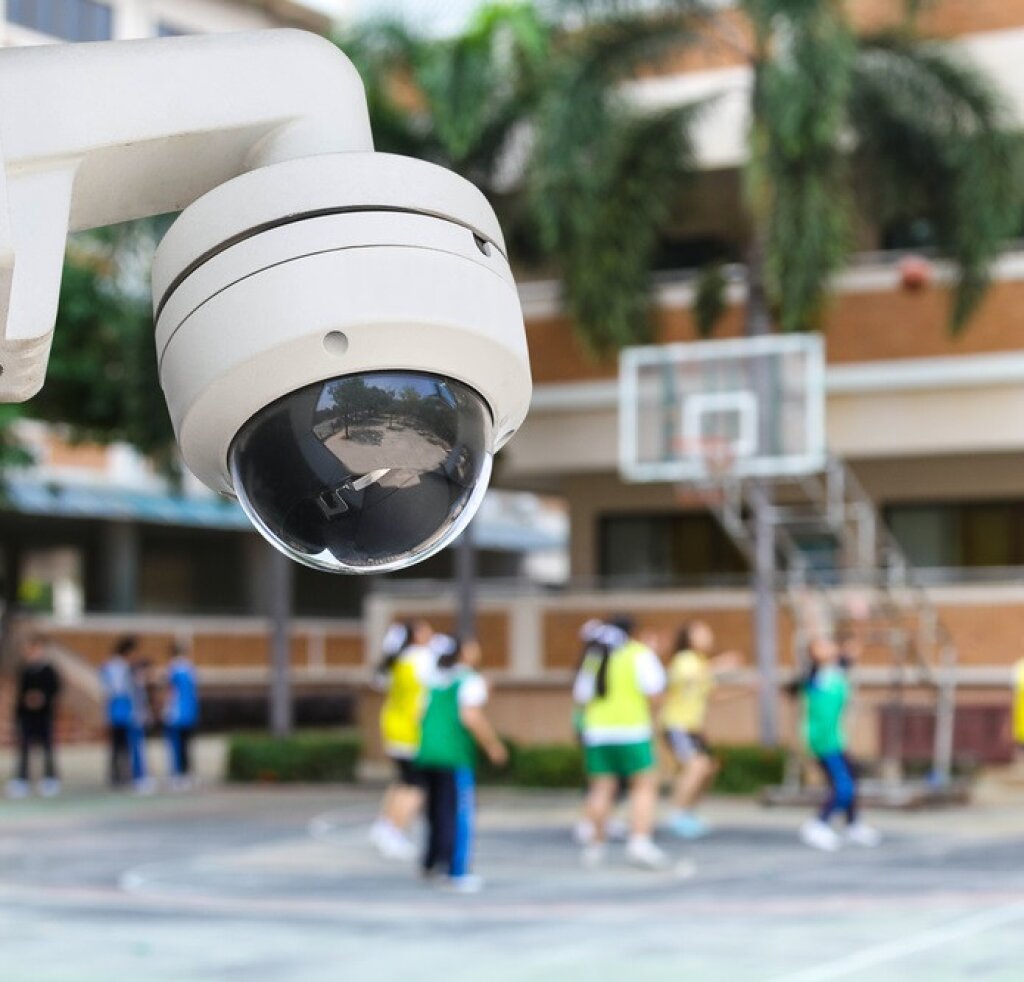Introduction: Law Enforcement Technology
Digital tools are revolutionising modern policing. Technology in law enforcement has gone beyond just modernisation; it’s now the driving force behind how police departments operate, make decisions and interact with the public.
From smart surveillance systems and predictive analytics to body-worn cameras and cloud-based evidence platforms, the impact of technology on policing is big, broad and growing.
Here we explore how technological advances can enhance transparency, improve incident response times and help law enfocement agencies to allocate resources more efficiently.
The Role of Technology in Modern Law Enforcement
Technology is no longer an add-on to policing; it’s the foundation. Whether managing digital evidence, forecasting crime or building public trust through transparent communication, technology enables law enforcement agencies to be more strategic, proactive and responsive.
Technology touches every aspect of policing, from patrols and investigations to large scale operations and administrative processes. As police forces adopt new tools and data-driven methods, traditional policing models are becoming more dynamic, efficient and accountable.

Key Benefits of Technology in Policing
1. Proactive Crime Prevention and Detection
Predictive analytics enables law enforcement agencies to predict the likelihood of some types of crime before they happen. Algorithms analyse historical crime patterns, demographic data and environmental factors to identify hotspots, so resources can be deployed in time.
Tools like facial recognition, licence plate readers and AI-enhanced surveillance make tracking suspects and solving crimes faster and more accurate.
2. Officer Safety and Situational Awareness
The impact of technology on policing is most evident in officer safety. Tools like body-worn cameras, drones and real-time GPS tracking give officers situational awareness.
These tools reduce risk in critical incidents, provide support in high-stress situations and are provide evidence in use-of-force investigations.
3. Better Evidence Collection and Management
Digital forensics, video redaction services and cloud-based storage have changed how law enforcement agencies manage evidence.
These forensics systems ensure secure documentation, allow for rapid sharing between departments and enhance the integrity and admissibility of evidence in court, all while complying with data privacy regulations.
4. Smoother Operations and Administrative Efficiency
Automation in report writing, case management and record-keeping reduces the administrative burden on officers. With more efficient systems, personnel can spend more time on higher value investigative work and community policing and less on paperwork.
AI-powered dashboards also help commanders make real-time decisions during operations.
5. Better Communication and Interagency Collaboration
Cloud-based communication platforms allow for seamless sharing of information between departments, emergency services and partner organisations. Whether responding to a crisis or managing a city-wide event, real-time communication tools ensure everyone is on the same page and response times are reduced.
6. Data-Driven Policing
Since 2024, policing by data has been the norm. With statistical modelling and machine learning, departments can analyse patterns to make evidence-based decisions, allocate resources more effectively and design targeted interventions.
7. Advanced Training and Simulation Tools
Virtual reality (VR) and simulation-based training environments are preparing officers for real-world scenarios in a risk-free environment. These VR tools improve decision-making, de-escalation skills and crisis management skills which leads to better outcomes in the field.
8. Transparent Public Engagement and Outreach
Technology is enabling more transparent and consistent communication with the public. Police departments use mobile apps and social media to share real-time alerts, gather community feedback and build relationships with residents to build trust and accountability.

Major Technology Used in Law Enforcement
Smart Surveillance Systems
Surveillance has moved from passive CCTV to intelligent systems powered by AI. These CCTV enhancement tools can detect unusual behaviour, match faces with criminal databases and alert officers in real time. In cities like London, these systems are key to public safety.
Predictive Policing Tools
Predictive policing software uses data algorithms to forecast where crime will happen. Predictive software enables departments to deploy officers more strategically and implement early interventions.
But transparency and fairness in algorithm design is crucial to avoid reinforcing systemic biases.
Digital Evidence Management Platforms
As the amount of digital evidence grows - from body-worn camera footage and surveillance videos to mobile phone data, forensic lab results and social media content - law enforcement agencies are facing increasing challenges in managing, securing and retrieving this information quickly.
Digital Evidence Management Platforms (DEMPs) have become the solution to these demands. DEMPs offer scalable, cloud-based solutions to help cope with the complexities of modern policing.
These platforms enable law enforcement agencies to centralise all types of digital evidence in a secure, searchable repository. Advanced tagging, metadata integration and auto time-stamping means critical information is always available throughout the life of a case.
Officers, investigators and prosecutors can find, review and share evidence from any device, which eliminates manual file handling and isolated storage systems.
One of the key benefits of digital evidence management platforms is interagency collaboration. With proper permissions and access controls, multiple departments, jurisdictions or legal teams can share and access case files in real-time. Access speeds reduce delays in investigations, improve coordination during joint ops and strengthen the chain of custody for court admissibility.
Also, DEMPs can integrate with other technologies such as case management software, licence plate recognition systems and video redaction tools. Integration creates a digital ecosystem that improves data flow, reduces administrative workload, supports smarter policing and underpins regulatory compliance.
In the end, DEMP technology not only improves operational efficiency but also accountability, transparency and public trust in law enforcement.
Drone Technology
Drones provide aerial surveillance for search and rescue, traffic monitoring and emergency response. They are especially useful in inaccessible or high-risk areas and a safer, more cost-effective alternative to traditional patrol methods.
Advanced Communication Systems
Modern policing relies on secure, reliable and fast communication. Integrated digital radio networks, encrypted messaging apps and mobile field devices ensure critical information reaches the right people at the right time to enable faster and more coordinated action.
DNA in Detection and Forensic Science
DNA analysis is a critical example of the use of technology in law enforcement and investigative work. DNA analysis has revolutionised forensic science and policing by providing a highly accurate method for identifying individuals and linking them to crime scenes.
The first use of DNA in a criminal investigation occurred in 1986 in the United Kingdom, when genetic fingerprinting helped solve the murders of two teenagers and exonerated an innocent suspect.
Today, DNA technology is one of the most valuable tools in modern policing. It is used to identify suspects, exonerate the wrongly accused, solve cold cases and establish familial links.
Moreover, national DNA databases have greatly enhanced the speed and scope of investigations. For instance, the UK's National DNA Database enables police to compare crime scene DNA with millions of profiles in seconds.
Despite its strengths, the use of DNA also raises ethical concerns around privacy, consent and data security. However, its impact on policing is undeniable and DNA analysis is transforming criminal investigations into more accurate, efficient and scientifically grounded processes.
Video Redaction Tools
Police departments use video redaction to protect the privacy and identities of individuals in body-worn camera footage, surveillance videos and other recorded evidence.
The redaction process involves blurring faces, licence plates or sensitive information before public release or court submission. Video redaction ensures compliance with privacy laws, especially in cases involving minors, victims or bystanders.
Advanced redaction software allows precise editing without compromising the evidence. By being transparent while protecting personal information, video redaction supports ethical policing, builds public trust and ensures sensitive material is handled responsibly during investigations and legal proceedings.
Law Enforcement Compliance Technology
UK police data handling is governed by the Data Protection Act 2018, particularly Part 3 for law enforcement processing, and the UK GDPR for general data.
The police must also comply with the Human Rights Act 1998 (privacy rights), Investigatory Powers Act 2016 (surveillance), and FOIA 2000. Oversight is provided by the Information Commissioner’s Office (ICO).
Many digital tools are needed, available and used to protect people’s data, including data encryption, access controls and redaction technology.
Challenges and Ethical Considerations in Policing Technology
1. Privacy and Civil Liberties
At the top of the list is public concern over surveillance and data collection which highlights the need for ethical policies. Technologies like facial recognition and AI analytics must be used with clear oversight to prevent misuse and ensure compliance with civil rights protections.
The use of technology in law enforcement raises concerns around privacy, surveillance overreach, data misuse and algorithmic bias. Technology can infringe on civil liberties and disproportionately target minority communities. To prevent abuse, many jurisdictions implement strict data protection regulations, independent oversight bodies and transparency requirements.
Law enforcement agencies are increasingly required to undergo ethical training and conduct regular audits of technology use.
2. Algorithmic Bias
Algorithmic bias occurs when computer algorithms produce unfair or discriminatory outcomes which often reflect existing social prejudices present in the data they were trained on.
Facit’s Identity Cloak uses shape-based tracking and focuses on detecting objects like heads and bodies rather than relying on facial recognition.
Shape-based detection avoids identifying individuals by race, gender or facial features which makes it inherently resistant to algorithmic bias.
By anonymising people based on form rather than identity, Identity Cloak offers a privacy-first solution that aligns with ethical surveillance and data protection standards.
3. Cybersecurity and Data Protection
As law enforcement becomes more digital, it also becomes more vulnerable to cyber threats. Robust cybersecurity is essential to protect sensitive data and maintain public trust.
4. Inequities in Access to Technology
Not all departments have equal access to advanced tools due to budget constraints or lack of technical expertise. Bridging the digital divide is crucial to ensure consistent standards of safety and justice across regions.
5. Public Trust and Transparency
For technology to be accepted, agencies must be transparent through community education and policy clarity. Showing how tools are used and how individual rights are protected can build trust and reduce resistance.
Future of Technology in Policing
As technology advances, so will policing. The impact of technology on policing will be determined by how well agencies balance operational benefits with ethical responsibility. With good governance the future will be smarter, safer and more accountable policing.
Conclusion: Law Enforcement Technology
Technology in law enforcement is no longer optional – it’s mandatory. From predictive policing to digital evidence management these tools are changing how agencies serve their communities.
But with this comes responsibility. Equitable access, civil liberties and public trust are key to getting the most out of technology in policing.
As society evolves so must its approach to public safety. By embracing innovation and staying grounded in ethics and accountability policing can rise to the challenge of the future.
Further Reading
The Risks and Rewards of Outsourcing Police Work to Private Security Firms



